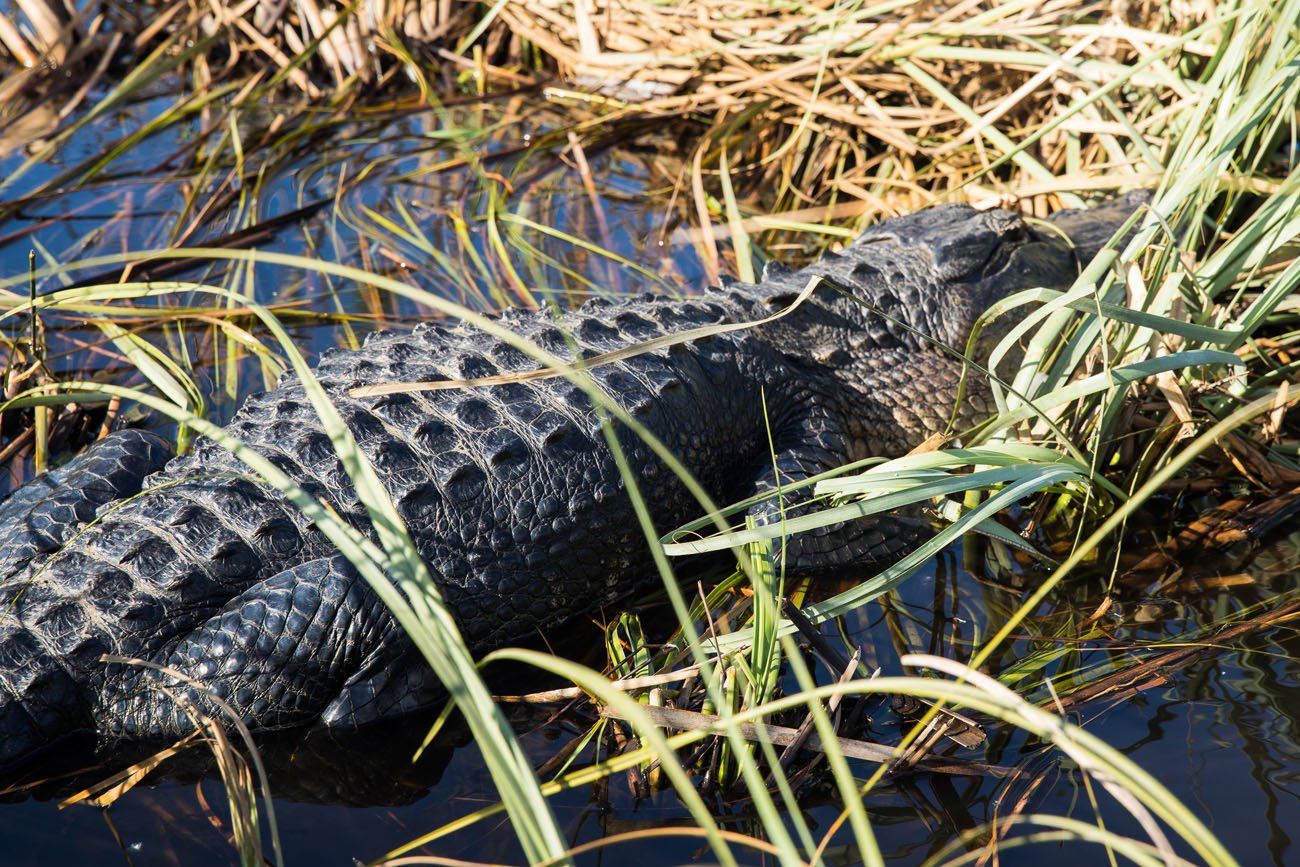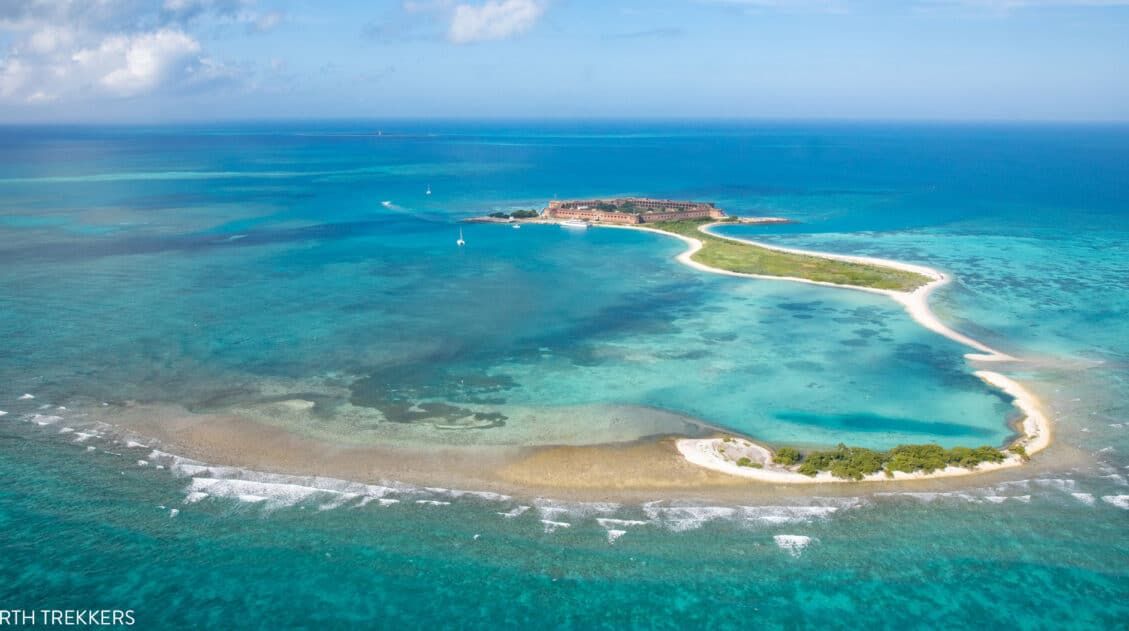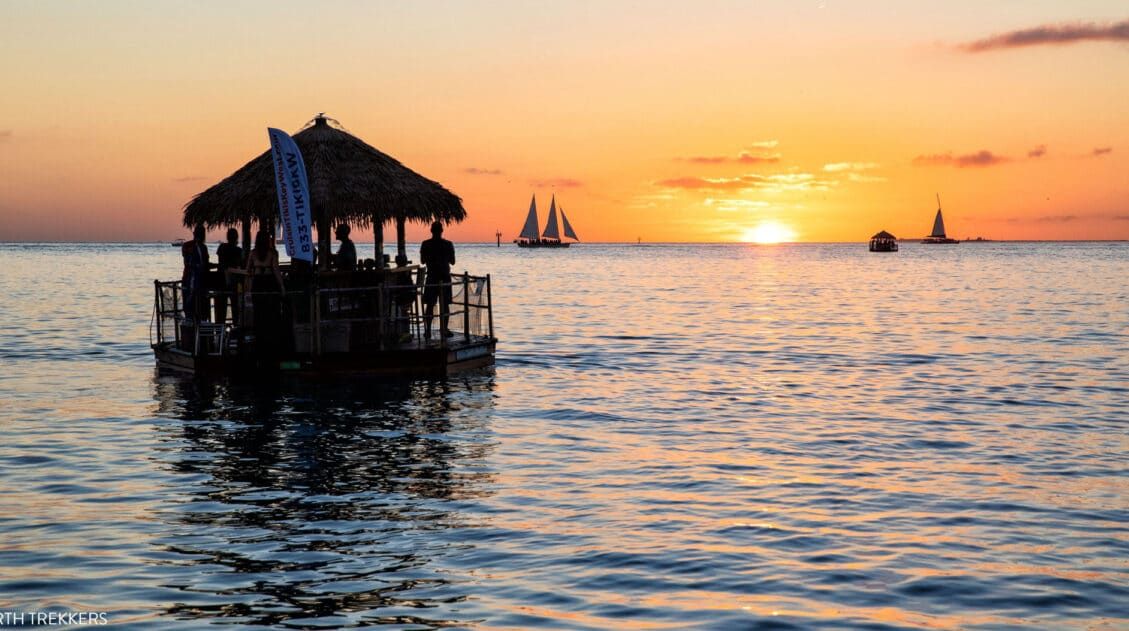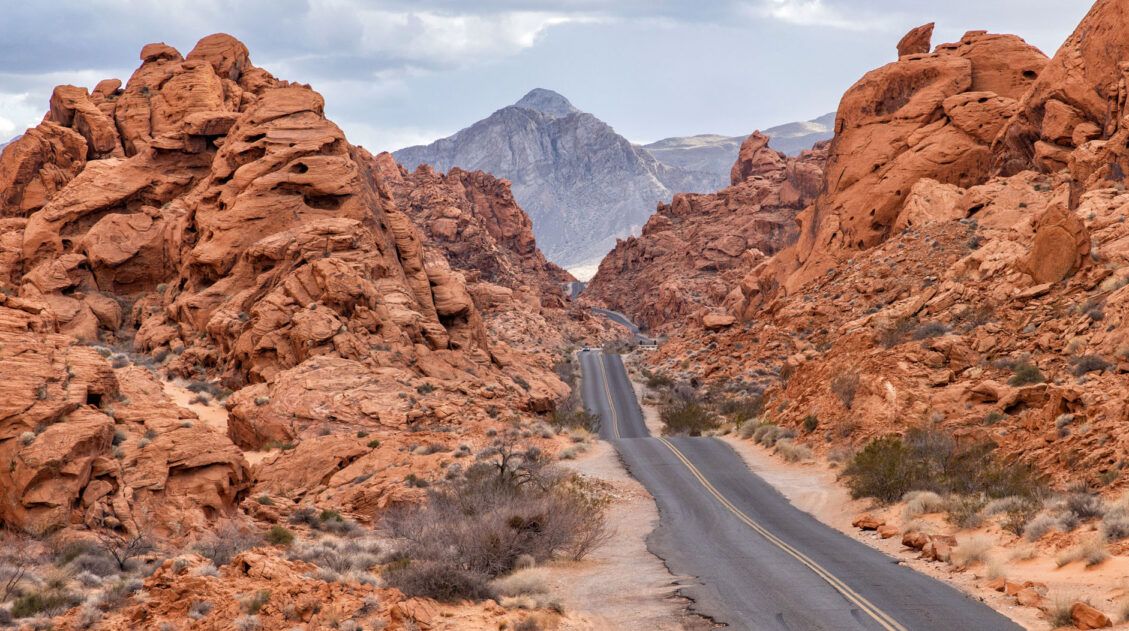When you think of the Everglades, what is the first thing that comes to mind? Mosquitos, alligators, and hot, humid weather? Yes, you can find those things here (and in great abundance depending on the time of year you visit), but there is so much more to the Everglades than hot, sticky weather and dangerous wildlife.
Everglades National Park is one of the largest parks in the United States, and unless you have a boat, you can only visit a fraction of the park. With one day you can drive through a portion of the park, go on short walks, look for alligators and manatees, and even go kayaking or take a ride in an airboat.
About Everglades National Park
Everglades National Park is the third largest park in the lower 48 states, after Death Valley and Yellowstone. The park is home to manatees, American crocodiles, a huge number of birds, and even panthers. This fragile ecosystem is listed as a World Heritage Site and it is an International Biosphere Reserve.
The Everglades is an enormous wetland that is fed by water from Lake Okeechobee. For hundreds of years, humans have been encroaching on the Everglades. In the 1900’s, canals were built, diverting water from Lake Okeechobee to cities and residential areas, and this has dramatically altered the ecosystem of the Everglades. Wildlife populations plummeted and now some animal species are on the verge of extinction.

For the past 20 years, the Everglades have been undergoing a huge restoration project. The park has been enlarged, water is being diverted back to the Everglades, and bird populations are increasing. This is controversial project, as some people want to protect this valuable land while others want to use this land for further urbanization.
Visiting the Everglades
How to Use This Map: Click the tab in the top left corner of the map to see a list of the points of interest and to turn layers on/off. Click the icons on the map to get more information about each point of interest.
To take this map with you, click the star next to the title of the map which adds it to your Google account. Next, within your Google Maps app, select ‘Saved’ and then select ‘Maps’. This map title will now appear in your list.
The southernmost section (the orange points on the map), which includes the Ernest F. Coe Visitor Center and the Guy Bradley Visitor Center, is one of the most popular spots for visitors. Highway 9336 links these two visitor centers with short walks, viewpoints, hiking trails, and opportunities to go kayaking.
Shark Valley (the blue points on this map), which sits due west of Miami, is the place to go on airboat rides and take a tour by tram or bicycle to see the wildlife.
The Gulf Coast Visitor Center is located on the western side of the Everglades, at Everglades City, just south of Naples. This part of the park was hit hard by Hurricane Irma in 2017 and was not open during our visit. A park ranger told us that this is the best spot to explore the Everglades by kayak. Since it is located on the opposite side of the Everglades, most visitors choose either the eastern side (Shark Valley and Ernest F. Coe) or the Gulf Coast. This article focuses on the eastern side, since this is what was open during our visit.
Planning a road trip through the Florida Keys? Take a look at our Florida Keys Itinerary, which includes Everglades National Park, plus Biscayne National Park, Dry Tortugas National Park, the Florida Keys, and Key West ↓
7 – 10 Day Florida Keys Itinerary: Miami, Key West & the National Parks
Several different ways to plan a Florida Keys itinerary, depending on your interests and time available.One Day in the Everglades
With proper planning and an early start, you can visit both the Flamingo area and the Shark Valley area of the Everglades.

Ernest F. Coe Visitor Center
This Visitor Center is a good place to get an overview of the Everglades. You have the option to view the exhibits and learn a little more about the park.
Plan on arriving here at 8 am. This will give you plenty of time to visit both areas of the park and you will miss most of the crowds.
The distance from the Ernest F. Coe Visitor Center to the Flamingo Visitor Center is 38 miles and takes about one hour to drive (one way). There are several short hikes and viewpoints to visit along the way.
Just past the visitor center is the pay booth ($30 per vehicle).
Anhinga Trail
The Anhinga Trail is a 0.8 mile paved and boardwalk trail through a small section of wetlands. This is your best chance to spot alligators and Anhingas, the bird this trail is named for. We were not so lucky in spotting alligators (we didn’t see any) but I have heard that those luckier than us have seen bunches of alligators at this location.

Pa-Hay-Okee Lookout Tower
13 miles from the Anhinga Trail is the Pay-Hay-Okee Lookout Tower. From here you have somewhat of an aerial view of the park. Stretched out in front of you is the Shark River Slough. This marshy area is really a very wide, shallow river that flows through the Everglades from the northern part of the park.

Mahogany Hammock
Mahogany Hammock is a cluster of mahogany trees and some of them are the oldest and largest in the United States.

A park ranger told us that mahogany trees were logged from the Everglades in the 1800’s. This part of the park was inaccessible at the time, which is why this last old grove of trees remains standing.
A 0.5 mile boardwalk trail makes a loop through this cluster of trees. It is here that you get to leave the wetland landscape behind and walk through what looks to be a tropical rainforest.
I think we have the world record for the fastest visit to Mahogany Hammock. As soon as we set foot onto the boardwalk, biting flies attacked us. They were in our hair, in our ears, and even bit us through our shirts. We picked up the pace and eventually ended up running through most of the loop, snapping just a few photos along the way.

I got the worst of it. Maybe it was the scent of my lotion, or maybe it was my aqua colored shirt, but I got destroyed by these flies. Tim had a few around him, but nothing like I did. For the next week, I would be scratching these itchy bumps on my neck, hands, and arms.
Later in the day, we talked to a park ranger about these flies. He told us that there is nothing you can do to repel them. Insect repellent has no effect on these flies, although it will help against the mosquitos.
Fortunately, this was the worst encounter we would have in the Everglades with the biting flies, although we were on the lookout for them for the rest of the day.
Paurotis Pond
Paurotis Pond is a very quick stop. If you are into bird watching, this is one of the bird nesting sites in the Everglades. Just pop out of your car and enjoy the view.

The birds are nesting in the trees on the far side of the pond.
Guy Bradley Visitor Center
The road ends at the Guy Bradly Visitor Center (what was once called the Flamingo Visitor Center). During our visit, most of the buildings were closed and activities cancelled due to ongoing damage from Hurricane Irma.
In the marina, we did get to see two manatees doing an underwater mating dance, so that was pretty cool.
The canal that heads north from the marina is one of the best spots to see the American crocodile. We did see one of these guys basking in the sun on the edge of the water.
There are several ranger guided tours by boat held in the afternoon. Learn more on the NPS website.
You can also walk along the Guy Bradley Trail for views out to the ocean. We found this walk to be rather boring so we turned around early.

A view out to the ocean with the Florida Keys off in the distance.
Once you are finished at the Flamingo area, drive back to the exit of the park. This drive takes approximately one hour.
Lunch at the Gator Grill
For lunch, you can drive into Homestead or you try the Gator Grill. The Gator Grill serves alligator, frog legs, burgers, and more. It is conveniently located a short drive from the entrance into the park, just 10 minutes from the Ernest F. Coe Visitor Center. We ate the frog legs and the alligator and both were very good.


Shark Valley
The drive from Ernest F. Coe to Shark Valley is long and rather annoying. You will be driving through an area that is a mix of residential and industrial areas, on roads with stoplights and stop signs. It is a 50-mile drive but it can take up to an hour and a half.
Shark Valley is one of the best spots in the Everglades for animal viewing. This is the spot to see turtles, birds, and tons of alligators.
There is a 7.5 mile road and bike trail from the Visitor Center to an elevated observation deck. The only way to access this road is by walking, biking, or a by taking a tour on the 2 hour tram ride.
If you want to take the tram, book your tickets in advance. They sell tickets for specific time slots and these do sell out. The last tour of the day is offered at 4 pm.
Learn more about renting bicycles, the Shark Valley Tram Tour, and book your tram seats here.
We went to Shark Valley but we did not go to the observation deck. We had an evening flight leaving from Ft. Lauderdale so we did not have enough time in our day to do this activity. It was a bummer because people were raving about how many animals they got to see.
Airboat Ride in the Everglades
We debated doing this. As part of the Everglades restoration project, airboat rides are banned in the majority of the park. At the northeast corner, near Shark Valley, airboat rides are still permitted. These companies now operate in conjunction with the National Park Service.
At the Flamingo Visitor Center, we had an interesting talk with a park ranger. He told us that the best way to see the Everglades is not by car, hiking, or tram. It’s by boat. Kayaking and canoe trips are very popular, but he also recommended that we take an airboat ride. So we did.
And I am so glad we did. This was our best experience in the Everglades.
There are several companies that offer tours of the wetlands. They are located in a cluster just a short drive from Shark Valley. We picked Coopertown simply because it was at the top of the list on the National Park Service website. The other two companies that are authorized to provide airboat tours in the Everglades are Gator Park and Everglades Safari Park.

It was a slow day, so we only had a few people on our airboat. For approximately 40 minutes, our driver took us on a tour of the wetlands. What a blast!
The boat is propelled by a giant fan, so there is no propeller blade sitting in the water. Once this fan gets cranking, these boats can really move. It was a thrill racing through the wetlands and watching the tall grasses fly by.


But it’s not meant to be just a fast-paced thrill ride. Our driver took his time on the way back, pointing out birds and several alligators resting in the shallow water.


The airboat ride is a beautiful, thrilling way to see the Everglades. If you are visiting the Everglades with kids, they will love this. It can be loud but cotton balls are handed out to help with the noise. There was a 2 year old on our boat. She was given earmuffs to wear and she smiled through the whole ride.
For updated pricing and hours, visit the Coopertown website here.
Airboat Tours
Tips to Have the Best Experience
Bring sunscreen and insect repellent. There is very little shade here so having sunscreen is very important. If you are visiting the Everglades between December and March, mosquitos are generally not an issue. However, at all other times of the year, make sure you are wearing insect repellent!
Gasoline. We did not see any gas stations between the Ernest F. Coe and Flamingo Visitor Centers. There is a gas station at the Flamingo Visitor Center but it has been out of service since Hurricane Irma. Make sure you have enough gas in your car before entering this part of the park.
Consider skipping Flamingo Visitor Center. If seeing manatees and American crocodiles are not that important to you, and if you have no desire to go on a kayaking trip, consider skipping the Flamingo area of the park. There is no guarantee that you will even see manatees or crocodiles if you drive all of the way down here. You could turn around at Paurotis Pond or Mahogany Hammock, saving time for Shark Valley.

Best Time to Go to the Everglades
December through March is the best time to visit the Everglades. Temperatures and mosquito levels are low. If you visit during the remaining months of the year, expect hot, humid conditions, swarms of mosquitos, and from July through November, there is the chance of a hurricane.
We were here in early February. Temperatures were in the 80’s and we did get rained on several times. Mosquitos were not an issue at all, however, those biting flies were a big nuisance!
Mosquitoes are present in late fall and early winter, but they are not as bad as they are in the summer. From talking to locals, if you want to visit the Everglades when mosquitoes are at their lowest, plan your trip for February.
Where We Stayed
We stayed in Homestead at the Courtyard by Marriott, which is just a 30-minute drive from the Ernest F. Coe Visitor Center. It is in a decent location, located right off of Florida’s Turnpike, with lots of restaurants in the area.
Are you planning a trip to the Everglades? Comment below if you have any questions.
More Information for Your Trip to Florida
















Comments 50